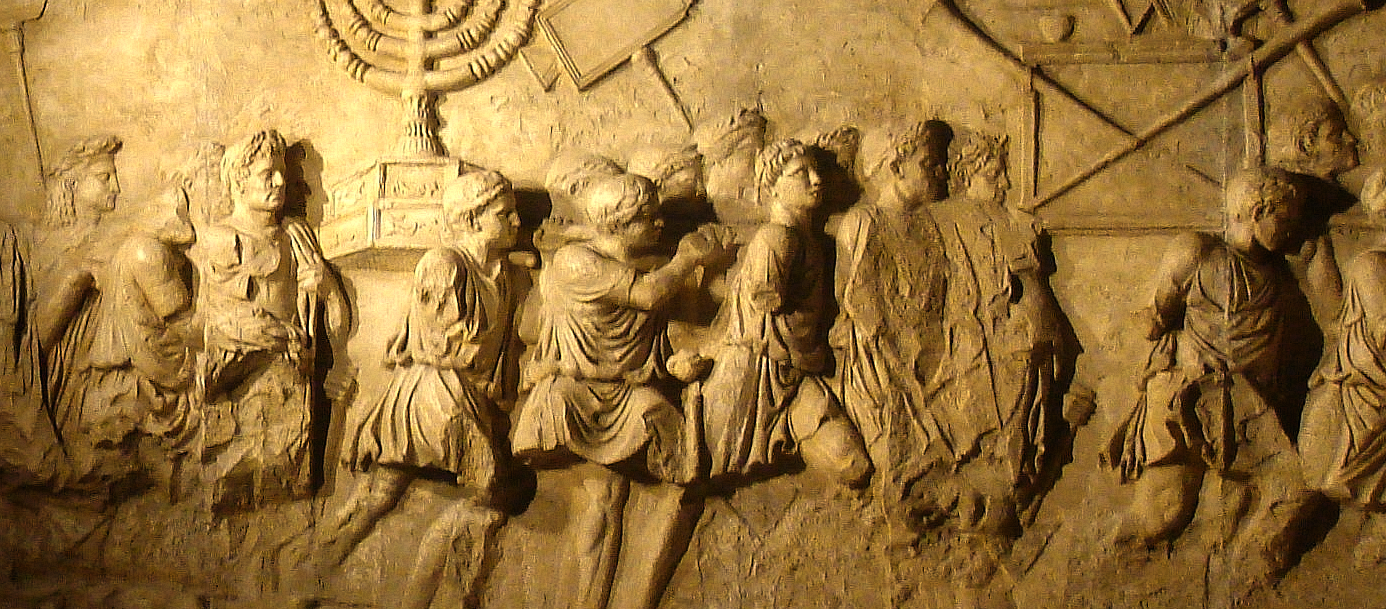

At 50 CE, England was split up into a number of tribal communities, one of which was called the Iceni. The Iceni tribe had become a client kingdom after being defeated by Rome, and was ruled at the time by King Prasutagus.
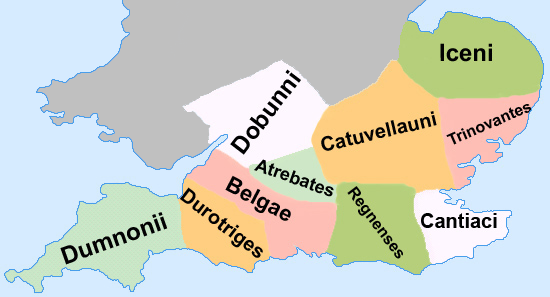
The Iceni seemed to have cordial relations with Rome on the surface, but like many other English client kingdoms around them many were unhappy with the empire. One of the reasons for this was Roman persecution of the druids. In Celtic societies druids were the religious and social elite: they played the role of judges, healers, teachers, poets, philosophers and advisors to kings and chiefs. They had some of the most senior roles within the celtic religion, and acted as prophets and soothsayers. They also helped to guard ancient Celtic culture and tradition, and were the ones to pass on fairytales and folklore to the next generation. However, unlike the celtic gods, who were accepted into the Roman pantheon of gods like those of many other polytheistic religions, the druids were persecuted mercilessly by Rome. This was because they were seen as a threat: they refused to accept Roman authority and held a lot of authority and power in Celtic societies. However, the persecution of such an admired group of people led many in the Iceni and other areas of England to be discontent with the Roman Empire. There was also quite a lot of corruption among Roman officials in Britain: taxes were too high and money lenders were not properly kept in check and often extorted the people.
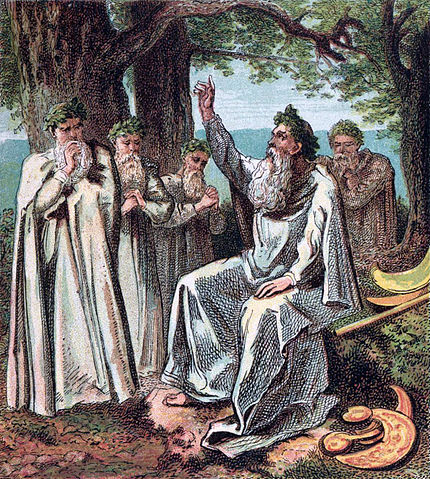
Unrest began to build after King Prasutagus of the Iceni tribe died. He had left half of his tribe to Rome, and half to his young wife, Boudicca, and her daughters. This was, according to Roman historian Tacitus, to appease Rome and ensure that the Iceni would not war with the Empire. It was a futile desire, because after his death the procurator in the region seized all Iceni land. He argued that the half that was left to Boudicca was rightfully Rome's as repayment of a loan. Boudicca complained about this, but the only result was that she was flogged and her daughters raped in public. The Iceni wouldn’t take this lying down.
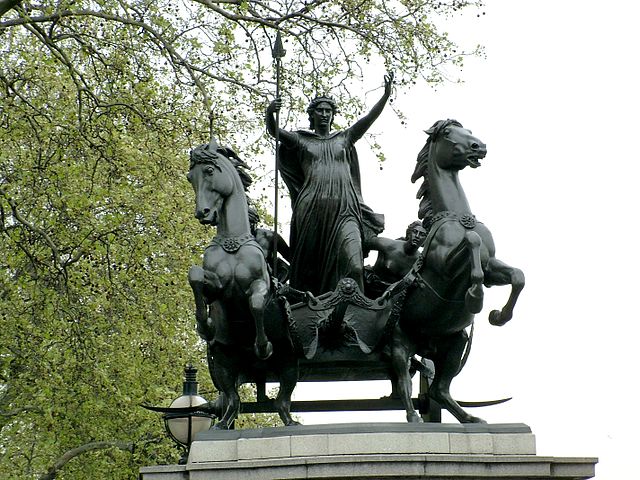
What were the main reasons why British Celts didn’t like Romans?
The Iceni, led by Boudicca, revolted for two reasons: to get revenge for the injustice faced by Boudicca and her daughters, and to get back the land they saw as being stolen from them. They initially had a lot of success attacking British Roman cities, partly because the Romans had massively underestimated them and because other Celtic tribes had joined them due to their own resentment toward Rome. Furthermore, at that point the Roman forces stationed in Britain were fighting the druid army in Anglesey so didn’t have enough manpower to overwhelm the Iceni. The governor of the region, Suetonius, was busy putting down a different rebellion on the Island of Mona during the beginning of the revolt, so he also couldn’t immediately turn his attention to battling Boudicca.

Between 60-61 CE, Boudicca and her forces would attack and destroy three major Roman cities in Britain: Camulodunum (modern Colchester), Londinium (modern London) and Verulamium (modern St. Albans). They began by attacking Camulodunum. As governor Suetonius was busy, another Roman official called Catus Decianus sent 200 Roman soldiers to defend the town, but they were ineffective. He then sent the Ninth Roman Division, but they too were destroyed by the Celtic uprising. The city was destroyed and its people executed.
Governor Suetonius had returned from the Island of Mona by the time the Celts began to attack Londinium but after finding out that he was vastly outnumbered he decided to abandon the idea of saving the city and wait for a more advantageous moment. He did, however, provide safe passage to anyone who wanted to escape the city. Londinium, like Camulodunum before it, was destroyed and the people who remained were massacred.
Boudicca then moved on to Verulamium, destroyed the city and killed the people. Meanwhile, Suetonius was preparing for a showdown. He picked a spot that had a forest at his back to avoid the chance of an ambush from behind – he and his men now only had to worry about the enemy in front of them. He chose a narrow area so that the Celts wouldn't gain a significant advantage from their larger numbers: in a narrow space only a certain number of combatants can fight at the one time. The Britons, on the other hand, were so confident in victory that they allowed their wives and children to watch the battle from carts set up behind them.

When the two sides first advanced, it was clear almost immediately who would gain victory. The Roman’s superior tactics and weapons (particularly javelins) meant they began to push back the celts almost immediately. They couldn’t retreat because they were blocked off by the carts they had set up so that their wives and children could spectate, and ended up being massacred by the Romans. Boudicca apparently managed to escape, but poisoned herself alongside her daughters in the face of their overwhelming defeat.
Explain Suetonius’s tactics.
Boudicca’s revolt didn’t lead to mass executions and even harsher treatment of the Iceni. Instead, Rome accepted that the revolt was caused by the unfair behaviour of Roman officials in Rome, and tried to change living conditions for English Celts under Roman rule. The governor of the area, Suetonius, was immediately recalled to Rome and replaced. Taxes became less severe and money lenders were better supervised. Rome sought to improve relations with the Brits and as a result there was little subsequent conflict between the two groups until the Empire fell.

In your opinion, were Britons treated fairly after the revolt?
Jewish people were persecuted greatly throughout the Roman Empire. This was particularly true during the era of Emperor Caligula, who went mad, declared that he was a god and ordered that a statue of him should be erected in every temple throughout the Empire. Jewish people refused and found the order offensive since they accepted only one true God. Caligula, enraged, ordered that the Temple, the most significant place of worship in Jewish tradition at that point, be destroyed. Although he was assassinated before this order could be carried out, the fact that he was willing to do this further alienated and enraged Jewish people.
Apart from Caligula, Jewish people faced a number of other injustices. For example, Rome decided to take over the appointment of the High Priest, the most senior religious position in Judaism. Jewish people saw this as Rome unfairly trying to interfere in their affairs. Furthermore, Jewish people faced frequent acts of discrimination. This included Roman soldiers often stripping naked in a Jewish Temple or burning a Torah scroll (Jewish sacred text), both of which were banned by Jewish religious law and were equal to spitting on Judaism. Therefore, Jewish people had many reasons to be angry with Rome.
Judea, one of the key Jewish provinces, was run by a series of corrupt and incompetent governors who had little respect for Jewish people and no knowledge of their customs. This led to a lot of discontentment from Jewish people in Judea, which culminated in a riot in Jerusalem that massacred a small Roman garrison after the Roman procurator Florus stole silver from the Temple in 66 CE. This shows a move towards violent protest by Jewish people stimulated by oppression and humiliation. A new group of Jewish people who believed in these aggressive tactics called the Zealots were formed, and this group played a big role in instigating the Great Revolt.
Using your knowledge of Roman attitudes towards other religions, what was the main reason why Jewish people were persecuted?
Why might Jewish people want to turn to violence?
The Great Revolt began on a small scale when a riot of Jewish people wiped out a small Roman garrison in response to the Roman procurator Florus stealing from the Temple. This was a relatively minor victory, but it gave many Jewish people hope that they would be able to put up a good fight against the Romans.
In Rome they were keen to put down the uprising as soon as possible. They sent 60,000 heavily armed troops into Judea, and these troops focused their first offensive on one of the most radicalised sectors of Judea, Galilee. They were successful in this campaign, and around 100,000 Jewish people were sold into slavery.
Not all Jewish people wanted to revolt against the Romans, or thought it could ever have a positive outcome given the might of Rome. Furthermore, one of Judaism’s most important cities, Jerusalem, had remained neutral throughout the uprising. Jewish revolutionaries entered Jerusalem and killed anyone who didn’t have the same revolutionary ideas that they did. Attacking their own people even while Rome surrounded them proved to be a fatal mistake.
Roman troops sieged Jerusalem and in 70 CE they eventually managed to breach its walls. They slaughtered hundreds of thousands and destroyed buildings, including the Second Temple, a place of great significance within Judaism. The Great Revolt had well and truly been defeated.
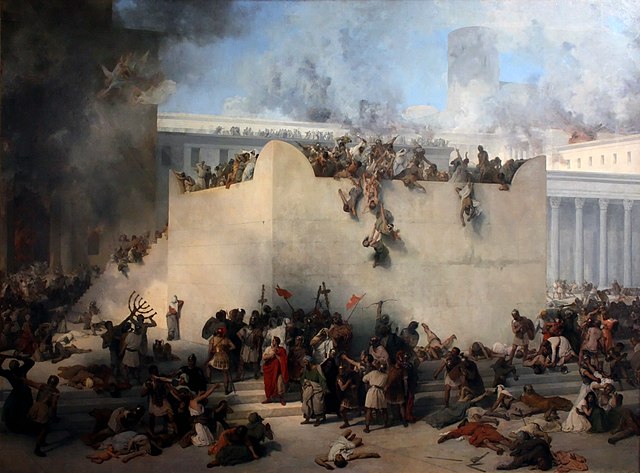
Unlike in the aftermath of Boudicca’s revolt, there were no benefits to be had for Jewish people. Though this revolt was similarly caused by Roman unfairness, Rome made no attempts to rectify the situation. The only consequences of the revolt were the some one million Jewish people who died, as well as loss of Jewish political power until 1948, when Israel was created. Therefore, it could be argued that this was one of the greatest tragedies faced by the Jewish community before the Holocaust. It is one example of just how unfairly Jewish people, and in general people who refused to recognise Roman gods, were treated in the Empire.

In your opinion, were Jewish people treated fairly after the revolt?